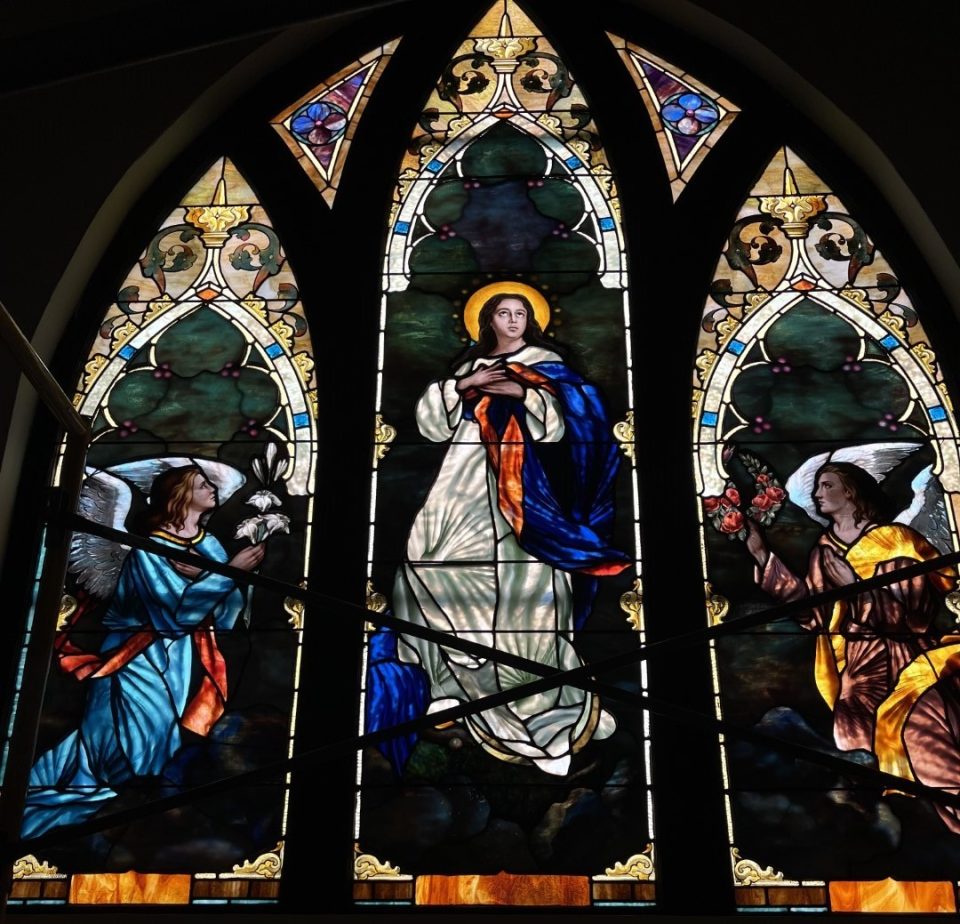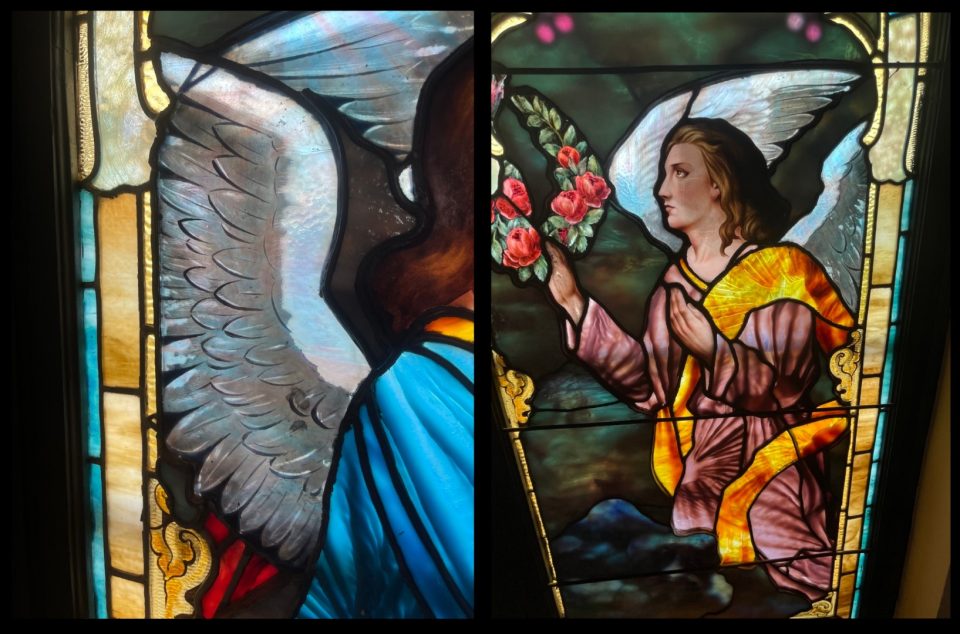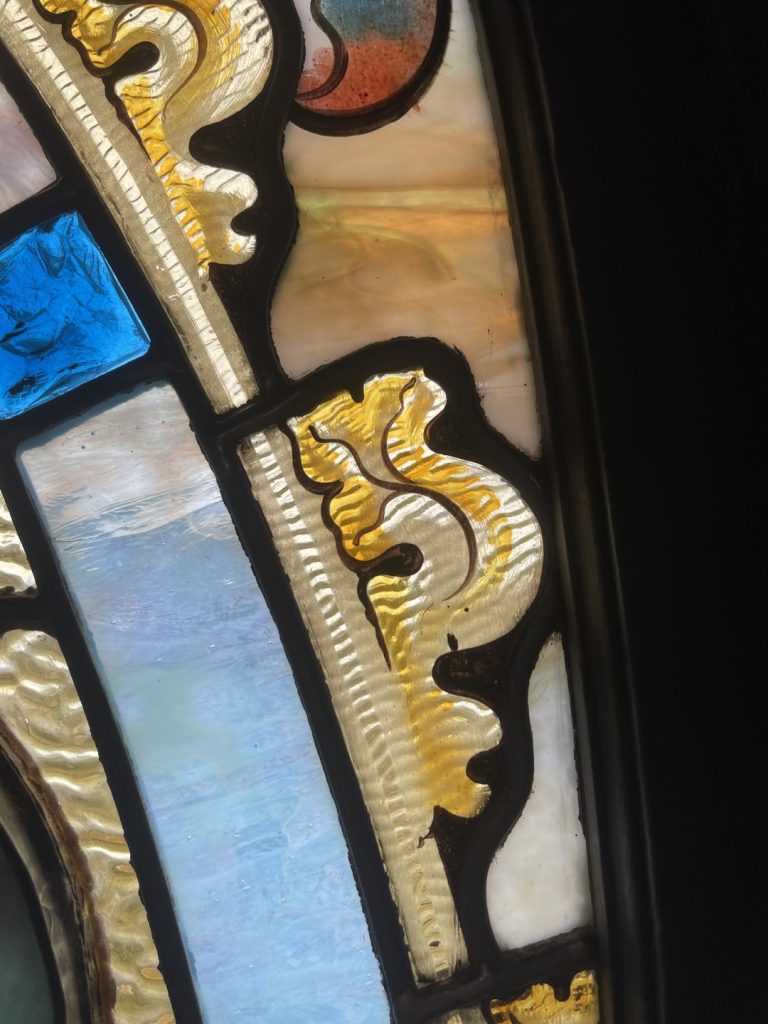
Much of what I’ve learned over the last 51 years has come from working on stained glass windows in churches.
This particular window I worked on in Ocracoke is an excellent example of first-class craftsmanship. The painting, selection of glass, and various techniques blend to create an exceptional focal point for this small chapel.

Drapery glass is created by ladling hot glass onto a heated steel table and then pushing and pulling it with various tools. I am puzzled about the round “ball” shape near the bottom. It may have come from one of the tools used to form the glass.

I was so impressed by the sensitivity to the painting in this section. I’m especially fond of the darker glass surrounding the lilies, making them a highlight of the window.

Working on the scaffolding, I was able to photograph close-ups of the wings. It is a real art to be able to paint so that the effect the artist is trying to achieve comes alive around 20-30 feet, or more, from the window.
Compare these photos to the finished window.

I have never seen this effect before, but the light reflecting off of this rippled glass, in the various shading of gold and beige, gave such a realistic look of the movement of light.
The blue jewel was a thicker piece of glass, I’m guessing about 3/8″, that was faceted by chipping away layers of glass, similar to the way arrowheads were made.

After I removed Mary’s face and hands, it became easier to see how the artist created the dramatic contrast between light and dark. The darker areas are two layers of glass sandwiched together, while the brighter colors are just one layer.
I often think of Rembrandt’s painting when I see windows like this—such masterpieces of thought and skill.